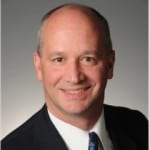Have You Heard About HERD?
 By Chris Bastian
By Chris Bastian
Senior Vice President, Engineering & CTO
SCTE-ISBE
HERD stands for Head End Re-architected as a Data Center and is closely related to an initiative in the telco world called Central Office Re-architected as a Data Center (CORD). As the name implies, HERD aims to redesign the cable industry’s head end to fulfill modern and constantly evolving business and network requirements.
The head end is the network aggregation point for video, internet, and mobility. “Legacy” cable head ends contain a wide assortment of purpose-built equipment, including routers, CMTSes, multiplexers, video transcoders, and caching servers. Depending on the size of the community they serve, head end buildings are often many hundreds of square feet and consume hundreds of kilowatts of power.

Several different business drivers and technology trends are contributing to the re-architecting of this legacy architecture. Business drivers include the need to increase customer satisfaction, decrease time to market for new services, combat over-the-top competition, and decrease both capital and operational expenses.

Fortunately, current technology trends can meet these business drivers head on. Network function virtualization (NFV) and software defined networking (SDN) are the major trends underpinning HERD. NFV takes functions that resided in purpose-built hardware in the head end (e.g., firewall functionality) and ports the software to commodity-based servers in the data center. The fundamental building blocks of NFV are virtualized network functions (VNFs), which are “orchestrated” by controllers to provide an overall network process. SDN separates the network packets (data plane) and the routing process (control plane). The control plane then has the flexibility to be implemented in a centralized, hierarchical, or de-centralized fashion.

In addition to NFV and SDN, many cable network operators are driving fiber closer to the customer (“fiber deeper”) and moving functionality out from the head end and hub to the fiber node enclosures (“distributed access architecture”). The combination of these two efforts supports higher order modulation (such as 4096 QAM), increasing capacity to 10 Gbps on the downstream and 1-2 Gbps on the upstream. Building on top of these two trends, full-duplex DOCSIS (FDX) is moving from initial network specifications to standardization and will support simultaneous transmission and reception over the same frequency spectrum, increasing the upstream capability to 5 Gbps or more.
The cumulative effect of all of these initiatives (HERD, NFV, SDN, fiber deeper, DAA, FDX) is that the functionality that now resides in the cable head end is being split apart—some of it migrating to the data center as part of the HERD effort and other parts of it migrating to the fiber node. As we’ll examine this fall at Cable-Tec Expo®, the resulting cable industry network architecture has the resources to support the business drivers of increasing customer satisfaction, decreasing time to market for new services, combatting over-the-top competition, and decreasing expenses.